Syn.: Orchis fusca Jacq., Orchis maxima K. Koch, Orchis moravica Jacq.
Family: Orchidaceae Juss.
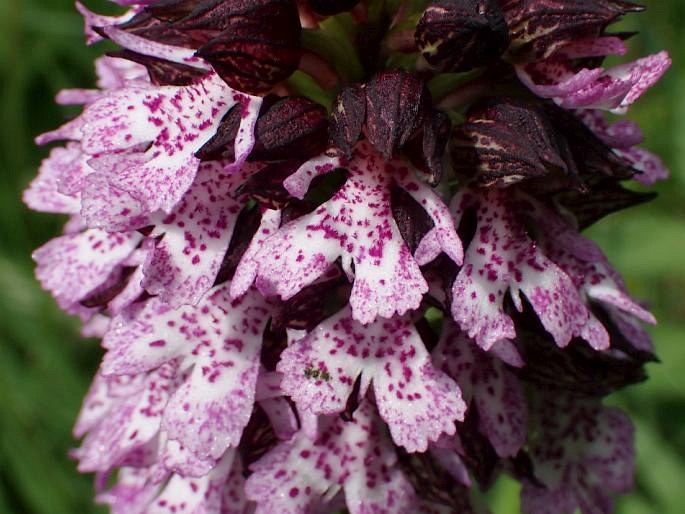
Distribution: European species, it occurs from southern England and Denmark southward to northern Spain, Sardinia and northern Greece, eastward to Crimea and the Caucasus.
Ecology: It grows on pastures or meadows, in scrub and forest margins. Blooms from April to June.
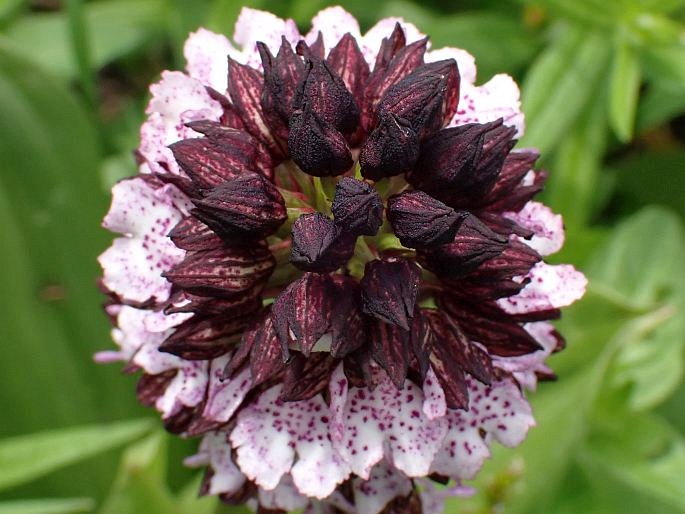
Description: Perennial herb with globose to ellipsoid tubers. Stem erect, 30–80 cm tall, with 3–6 leaves in the lower half, leaves oblong or oblong-ovate. Spike cylindrical, many-flowered; all bracts membranous, ovate-lanceolate; perianth-segments free, outer 12–14 mm, ovate, acute, brownish-purple on the outside, inner shorter, linear-lanceolate; galea brownish-purple, or pink with dense purple spots, labellum (8–)10–15 mm long, longer than wide, white or pink with purple spots, 3-lobed, middle lobe usually obcordate, spur shortly cylindrical, directed downwards. The fruit is a capsule.
Threat and protection: The Lady Orchid is protected by law in Czechia, Poland, Slovakia, Hungary, Serbia, Ukraine and Russia. It is also protected by CITES.

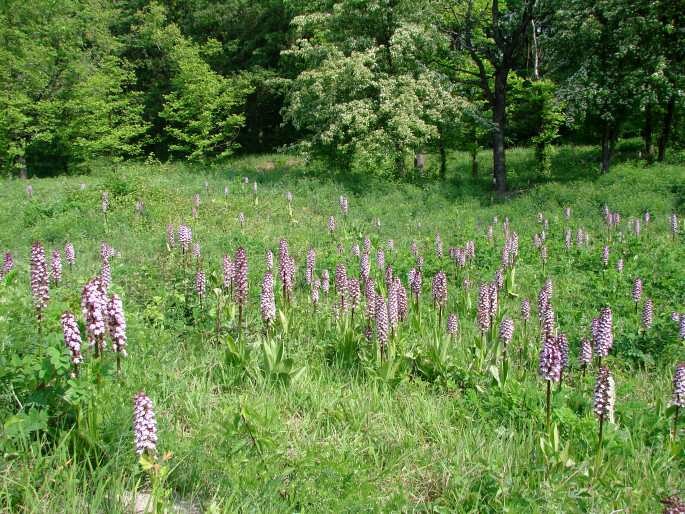

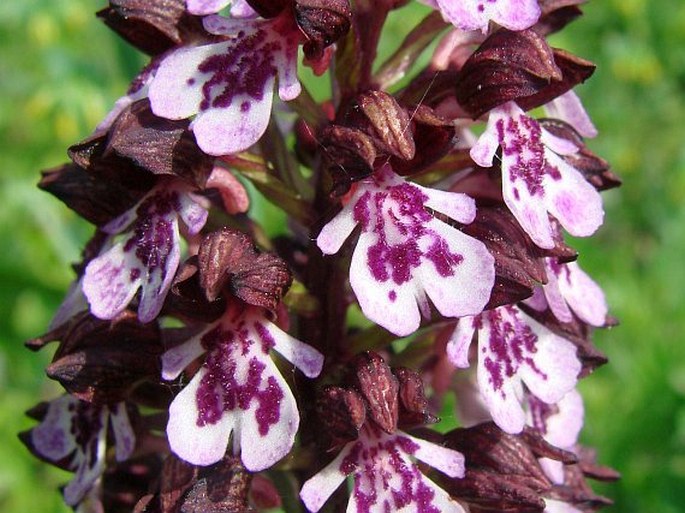
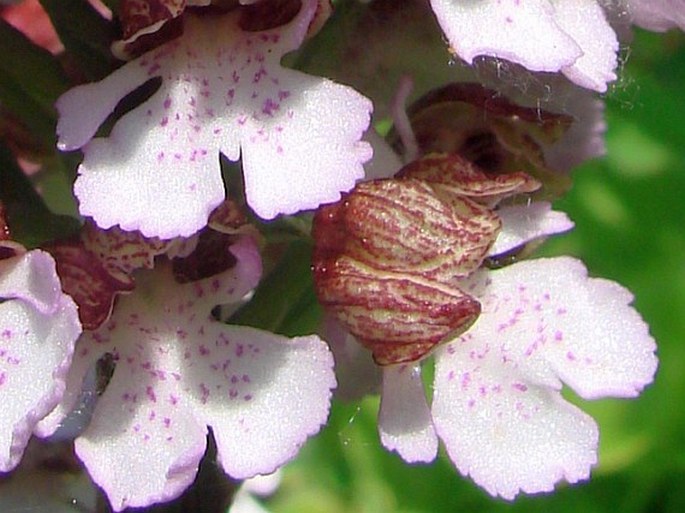
These images were taken in Czechia, Bohemia, Chotuc (April 30, 2011).


